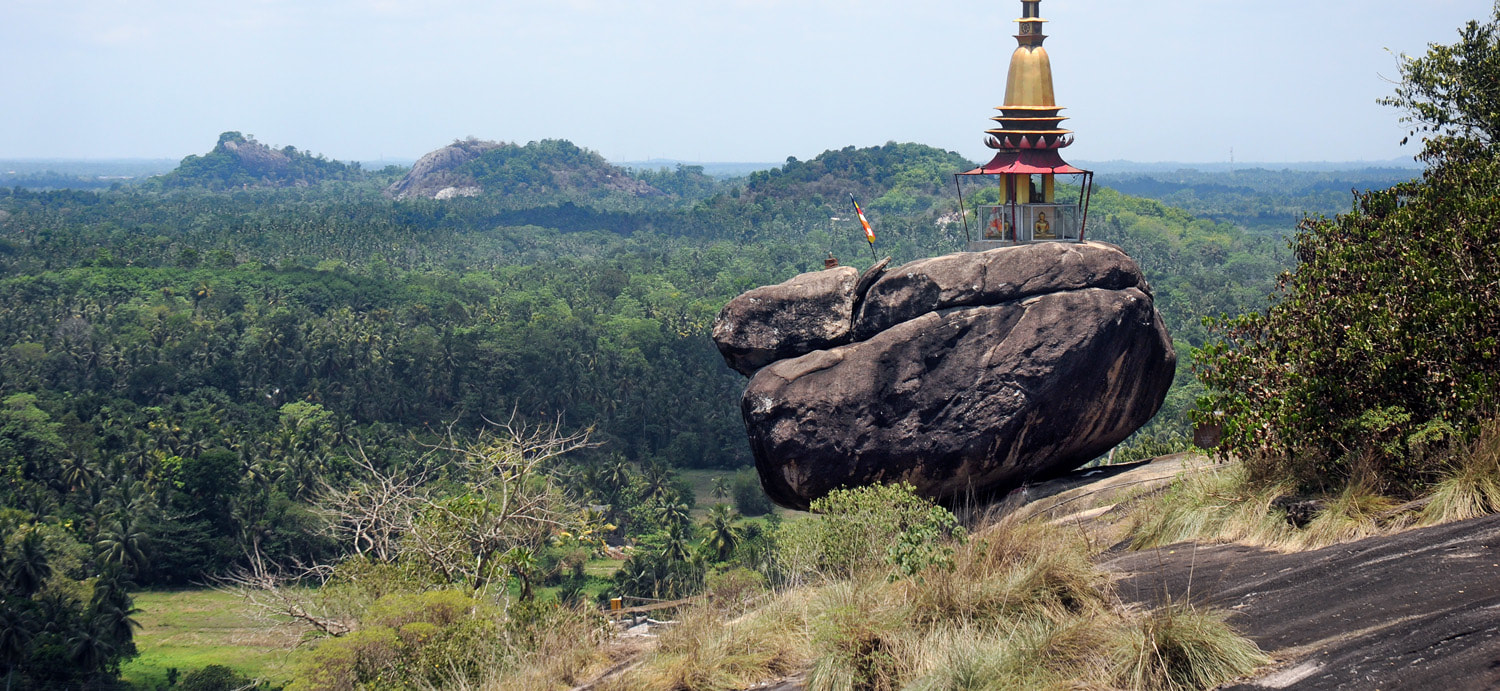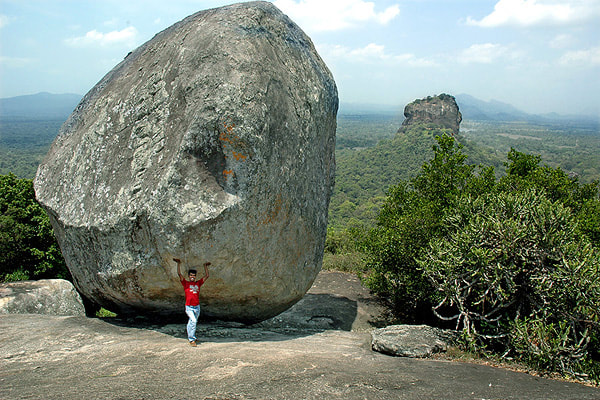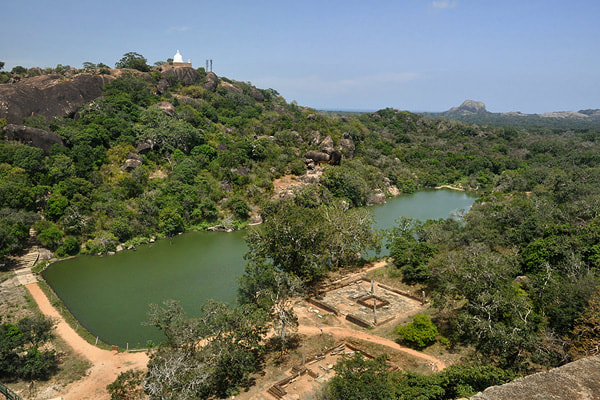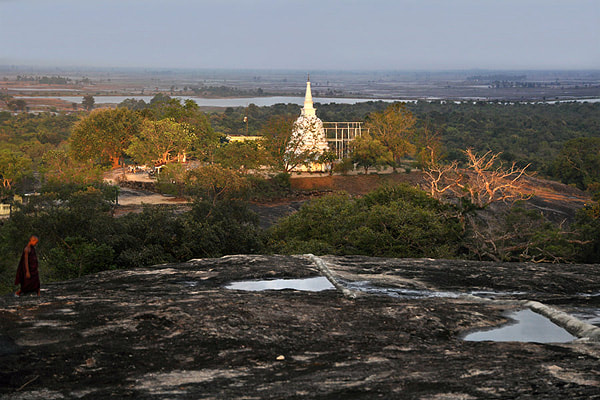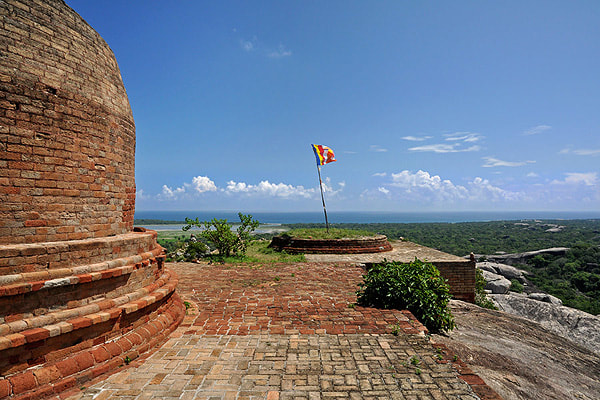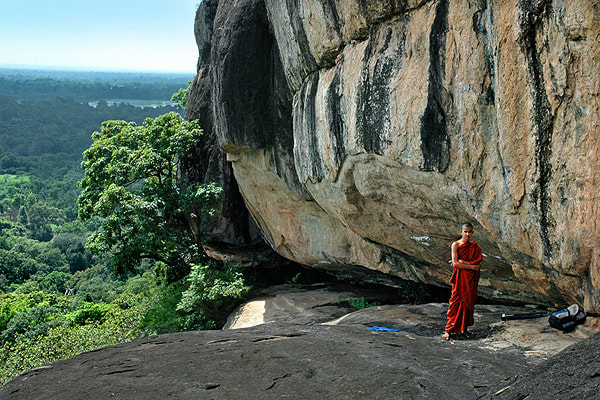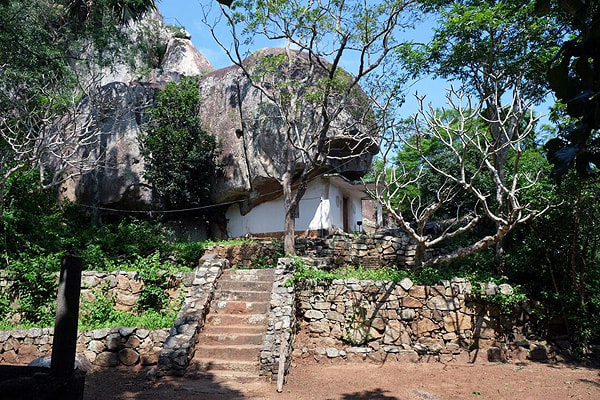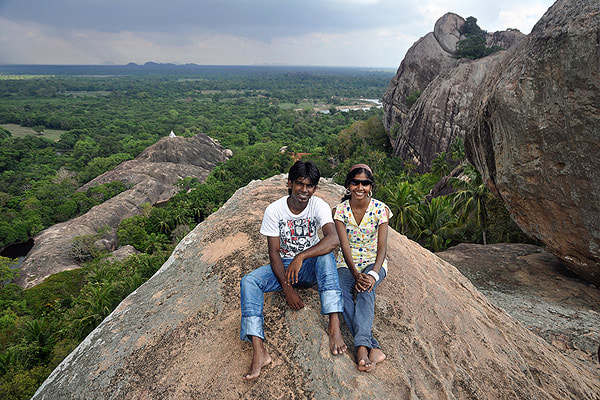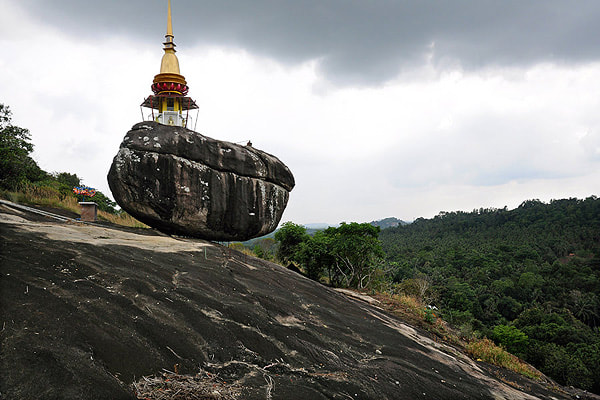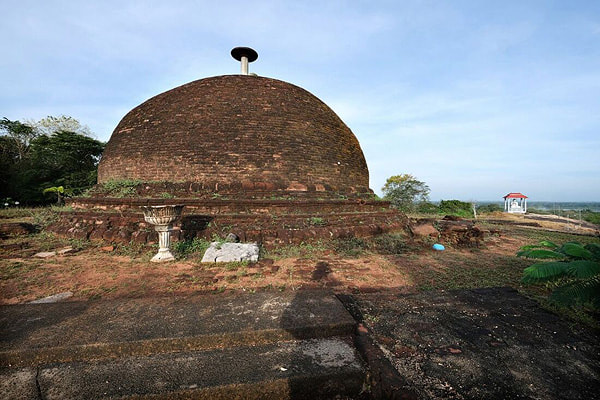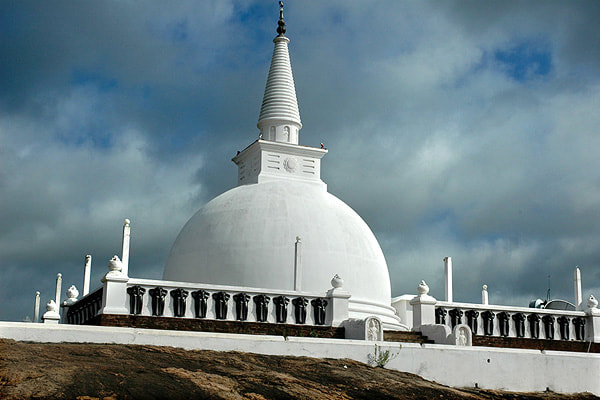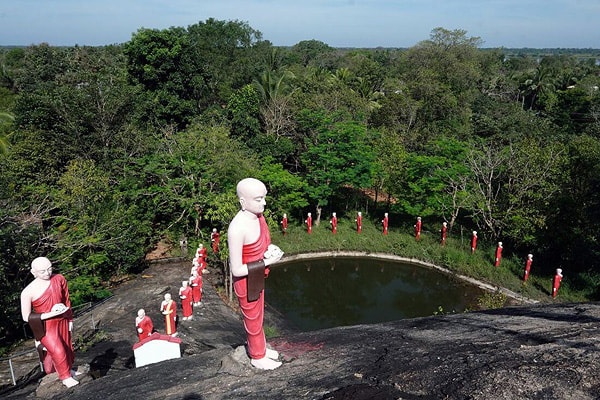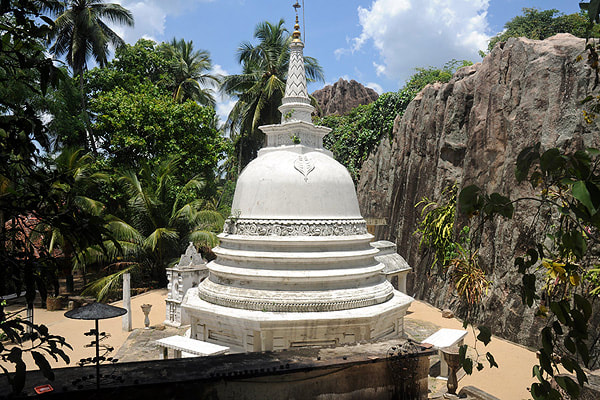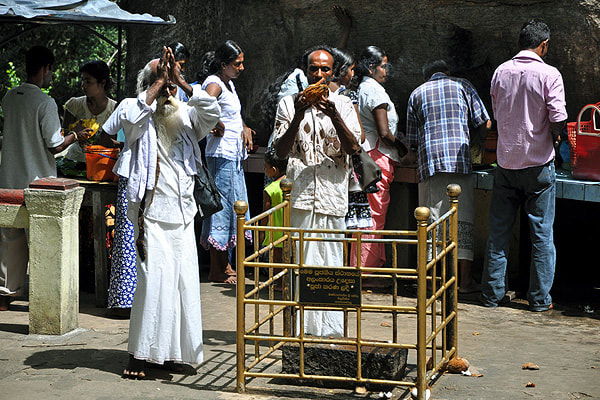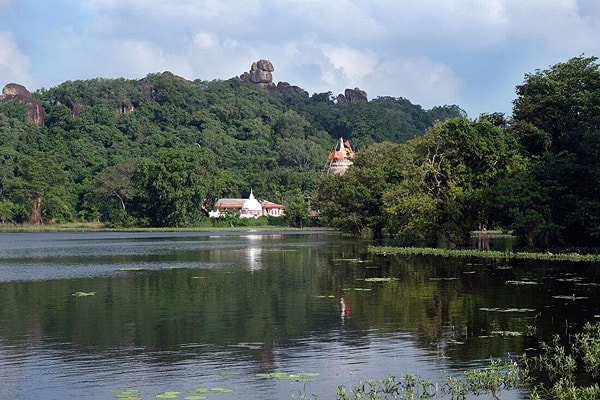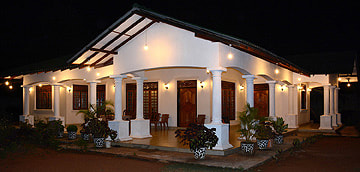Most of the ancient sites we categorise as "forest temples" and "rock temples" and "cave temples" and "cave hermitages" have in common that they served as monasteries of reclusive monks. Several of them belong to the very early period of Buddhism in Sri Lanka, which corresponds the last three BC (or BCE) centuries. Particularly cave monasteries are among the earliest Buddhist sites in Sri Lanka. In later times, some monks left the big towns and settles in groups of rocks again, whenever they did not want to share the lifestyle of monks that were more and more engaged in worldly affairs. Reclusive monks living in small monasteries were first and foremost interested in a refuge for undisturbed meditation. In contrast, the large monasteries of the capital were landowners on a large scale and therefore developed into centers of argicultural and irrigational administration. This means, they had secular functions, though the monastic rule prohibited this. Officially, the secular affairs were administered by lay helpers living as servants in the large monasteries or nearby. But the monks had a final say in all monastic affairs, of course. Nonetheless, despite their economical significance Sri Lanka's large monasteries remained to be religious places, because they were engaged in studies of Buddhist texts and producing commentary literature. The ambition of a monk in the capital was to be a scholar. Another religious activity of monks, particularly of those living in or near villages, were priestly functions such as giving spiritual advice, providing religious education and executing burial ceremonies. Forest monks living in rock shelter also served the needs of nearby villages. But, as said, the main purpose of a life as a reclusive in simple rock shelters was meditation.
To be honest, there is not a big difference between "rock temples" and "cave temples" in Sri Lanka, We differentiate between them just for a practical reason, viz. to avoid having too many places within only one category of our sub-menu titles. The criterion for our categorisation is not a historical, but a touristical one. In some cases, the main attraction of an ancient monastery is the rock in itself or a stupa atop the rock. In such cases we call it a "rock temple". If the the rock shelters are more interesting for today's travellers - may it be because the caves are numerous or are carry important inscriptions - then we sort the site as a "cave temple". And if the paintings in the caves are the main attractions, it's usually a "Kandyan cave temple", because most surviving murals in cave temples are from the Kandy period.
Let's give an example of the arbitrariness of our sub-menu-titles. Due to it's numerous attractions - and mainly because it's the home of our managing director and the location of his guesthouse "First House Mihintale" - Mihintale is a completely separate sub-menu title in our manu bar. But it's an ancient site, of course, and "ancient sites" are another sub-menu-title in our list. Moreover, Mihintale is a major pilgrimage site, "pilgrimage sites" forming yet another sub-menu title. So for both kinds of sites we have different categories, though Mihintale (and others) fit in both of them. What now would be the correct category in our list of sub-sub-menus of the sub-menu "ancient sites"? Again, there are many options to categorize Mihintale, it fits into several of our categories: As Mihintale is a large excavation site, it could be called a "ruined city". As the main temple is a Vatadage, we could categorize Mihintale as a "stupa temple". "Image houses" also play a role in Mihintale. It's also a "prehistoric site" in the sense that Wassamale in the northern outskirts of Mihintale was a refuge of the significant prehistoric king Pandukabhaya. Doramadalawa, as this refuge is called in the chronicles, also has a "Kandyan cave shrine". And concerning the difference between rock temples and cave temples, that we arbitrarily introduced in our sub-menus: Rajagirilena in Mihintale is shaped by its rocks, the immense boulders of Rajagirilena are the predominant feature from the perspective of a visitor. So "rock temple" would be a suitable category for Mihintale. However, close to the pond known as Kaludiya Pukana are caves still inhabited by monks. So our category "hermitage caves" also applies to Mihintale. And almost all cave or rock temples of Sri Lanka can also be placed under our sub-menu title "forest monasteries". You see: Each subsumption is debatable, and our differentiation or classification system is only for convenience, not of art-historical relevance.
Let's give an example of the arbitrariness of our sub-menu-titles. Due to it's numerous attractions - and mainly because it's the home of our managing director and the location of his guesthouse "First House Mihintale" - Mihintale is a completely separate sub-menu title in our manu bar. But it's an ancient site, of course, and "ancient sites" are another sub-menu-title in our list. Moreover, Mihintale is a major pilgrimage site, "pilgrimage sites" forming yet another sub-menu title. So for both kinds of sites we have different categories, though Mihintale (and others) fit in both of them. What now would be the correct category in our list of sub-sub-menus of the sub-menu "ancient sites"? Again, there are many options to categorize Mihintale, it fits into several of our categories: As Mihintale is a large excavation site, it could be called a "ruined city". As the main temple is a Vatadage, we could categorize Mihintale as a "stupa temple". "Image houses" also play a role in Mihintale. It's also a "prehistoric site" in the sense that Wassamale in the northern outskirts of Mihintale was a refuge of the significant prehistoric king Pandukabhaya. Doramadalawa, as this refuge is called in the chronicles, also has a "Kandyan cave shrine". And concerning the difference between rock temples and cave temples, that we arbitrarily introduced in our sub-menus: Rajagirilena in Mihintale is shaped by its rocks, the immense boulders of Rajagirilena are the predominant feature from the perspective of a visitor. So "rock temple" would be a suitable category for Mihintale. However, close to the pond known as Kaludiya Pukana are caves still inhabited by monks. So our category "hermitage caves" also applies to Mihintale. And almost all cave or rock temples of Sri Lanka can also be placed under our sub-menu title "forest monasteries". You see: Each subsumption is debatable, and our differentiation or classification system is only for convenience, not of art-historical relevance.
for opening a destination page in a new tab, please click the image
for going to the destination page in the same tab, please click the name in the text line below the image
for going to the destination page in the same tab, please click the name in the text line below the image
